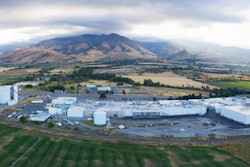The United States is the largest consumer of packaged beverages, and North American volume consumption is estimated to reach 551.32 million ton per annum in 2022.
Ron Puvak says there are a number of ongoing food and beverage packaging trends:
- More material conversions
- Unusual container choices
- Zero-waste initiatives
- Stand-up pouches
- Healthy & Convenient
- Gen Z – how will packaging sway this generation?
- Concerns around BPA
- Universal design/simplification
- Cannabis
And several consumer changes that will also affect the industry:
- Millennials are aging and transitioning to parenthood.
- Health tracking and self-monitoring.
- Premiumization of experience.
- Mistrust of big brands.
Puvak says that packaging touches all points along the consumer user experience, from the consumer’s first encounter with the product to the final moment of “what are we going to do with” the remaining product container or package.
One expected trend is that the global $13 billion dollar water market will go “premium,” and will soon edge out soda. According to Puvak, private label PET water accounts for almost half of the single-serve market today, and its share is on the rise. The fastest growing segment is sparkling water.
Another trend cited by Puvak is the expansion of dairy alternative beverages, with an expected 15 percent compound annual growth rate. “Mega-trends” include the growth of food and beverage categories that focus on premium, organic dairy; non-GMO and plant-based alternatives; and, fresh-foods and coffee creamers. Fermented beverages such as kombucha are also expected to continue to grow.
Cannabis has already touched the beverage market, and Puvak says that while the total market is currently estimated at $10 billion, some future projections estimate the market will grow to $250 billion in the future. He also says that cannabis-infused beverages could potentially disrupt the beer industry with cannabis-infused sparkling water or other non-alcoholic beverages.
Personalization, smart labels and new print developments such as 3D printing will all come into play, with personalized drinking systems such as Keurig and Soda Stream; personalized packaging/labeling for beverages and other products; personalized meal kits; or, bottles such as those by the Belgium-based Martens Brouwerij that “talk” to each other with the assistance of a smartphone app.
Sustainability and e-commerce will continue to be at the forefront of beverage market trends. Puvak says some of the future implications to 2025 for sustainability include “Big Systems” such as economical and renewably sourced polymers, green chemistry replacements, composting, a new plastics economy and marine debris collection.
Puvak also pointed out that e-commerce, while it will continue to expand (and potentially outpace traditional retail), has taken an interesting turn with Amazon creating its own “private label” that will directly compete with the brands that it currently sells, as well as opening brick and mortar stores.























